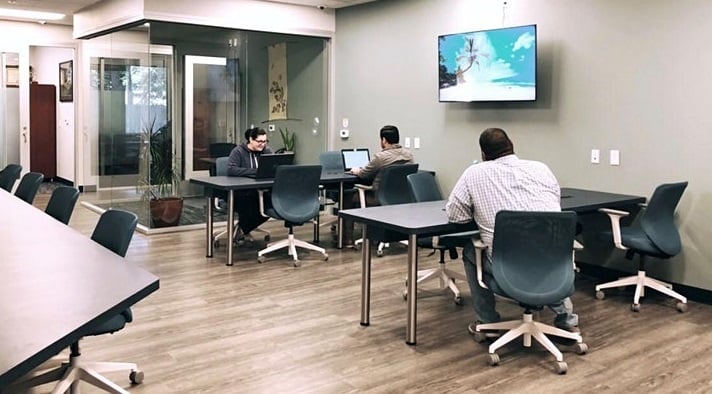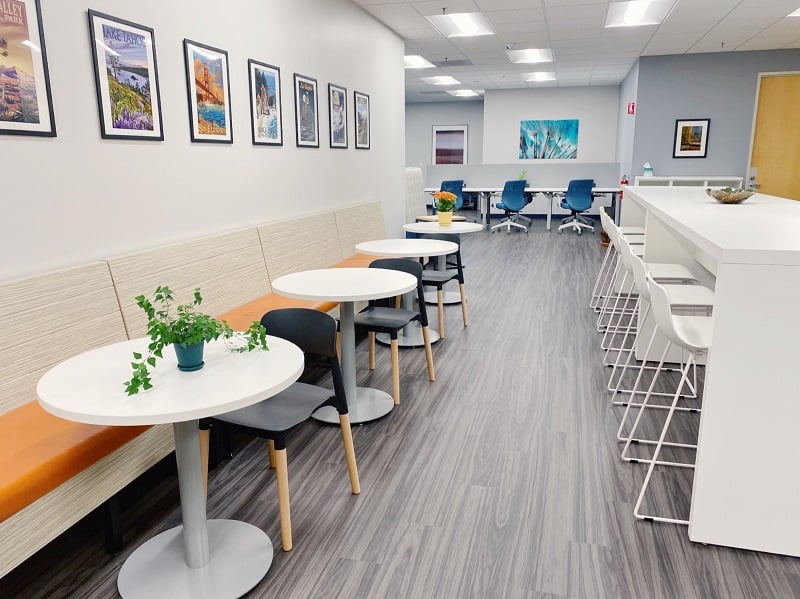Americans spend a depressing 30 billion hours commuting each year.
What if, rather than spending hours in the car driving long distances between the suburbs and an urban workspace, you could walk, ride a bike, ride public transit or take a short drive to a nearby coworking space instead?
Coworking Spaces Spread to Suburbia
Coworking office space in the suburbs is on the rise and is poised to be a driver of shared workspace industry growth. As Steve King, partner at Emergent Research explained, “the spread [of coworking] across the U.S., out of large cities and urban areas into suburban areas and small cities is happening faster than we expected.”
These suburban coworking spaces enable people to reduce or eliminate their commute by working closer to home.
Urban affairs and innovation consultant Jayson White points out that while there is increased demand for high-density communities in central business districts, actual population growth is happening in the suburbs. As he explained in an interview last year:
“There are three main sources of net population growth for a city: foreign immigration, net domestic urban migration when people move from one city to another, and old-fashioned urbanization-people moving from the country to the city or from a small city to bigger city. When you look at the current population flows-and more importantly the longer-term trends, all three sources are pointed at the fast-growth mid-markets and suburbs around major metros.”
Explosive Growth of Suburban Coworking
The rise of suburban coworking is due to a number of factors in addition to population flows. The continued growth of the contingent workforce, including freelancers, independent professionals and remote workers, plays a role, as do cultural shifts toward more flexible work and improved work-life balance.
These factors have led to a massive growth trend in the shared workspace industry, with no end in sight. The 2018 Coworking Forecast, presented by the Global Coworking Unconference Conference (GCUC) and Emergent Research estimates that there will be 30,000 coworking spaces and 5.1 million people coworking by 2022. This is up from 14,411 spaces and 1.74 million members in 2017.

In addition to cutting commute hours, suburban coworking office spaces offer several other benefits to members:
Flexibility
For suburbs residents, local coworking spaces provide flexibility that may not be found in urban centers. Appointments, soccer games and mid-day errands can potentially all happen close to work and home rather across the city or in a different town entirely. This flexibility enables members to schedule their days in a way that works for them and their families.
Proximity
Suburban coworking lets parents work closer to their children’s schools and daycare centers. This means being nearby for drop-offs and pickups, emergencies, play dates, field trips and classroom participation.
Lifestyle
For some professionals, working in an urban center such as a coworking space in San Francisco is invigorating and suits their lifestyle preferences. For others, traveling into and out of a city every day is exhausting. Depending on your preferences, suburban coworking may be a better fit
Professional diversity
Urban coworking spaces tend to be tech-heavy. Suburban coworking spaces, however tend to reflect a wider variety of professionals from all walks of life, including academics, parents with home-based businesses, therapists, attorneys, wellness professionals and more.
As the shared workspace industry grows, suburban coworking is increasingly popular, with no end in sight. Pacific Workplaces has been a leader in the trend, offering coworking space options in suburban communities, with 19 locations and a variety of shared workspace options around California and Nevada. Find a Pacific Workplace location near you.
by Cat Johnson a writer, podcaster and content strategist in the coworking industry and a happy member at NextSpace Santa Cruz.

